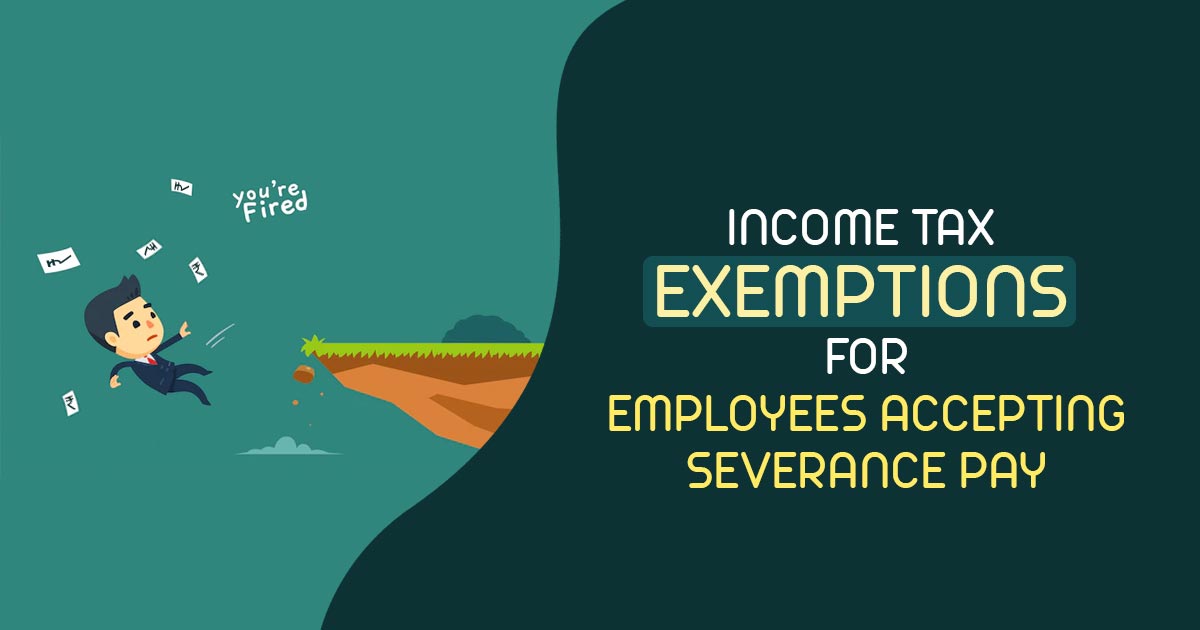
There is a tax levied on the severance pay proposed to the laid-off employees, and certain options would be made for them to claim the income tax exemptions/relief. The below-mentioned options are available for those employees who are finding tax exemptions on severance payments under the income tax rules.
Retrenchment Tax Exemption Under Section 10(10B) for Employees
Under the Industrial Dispute Act, 1947 when the employee obtains any compensation during retrenchment time these employees might claim for the exemption under Section 10(10B) of the IT Act. But, the exemption is restricted to lower of the subsequent amounts:
- a) Actual amount obtained
- b) The amount computed as per the provisions of Section 25F(b) of the Industrial Disputes Act, 1947 identical to 15 days average pay for each completed year of service or part after that in excess of 6 months.
- c) Amount prescribed via the Central Government, i.e. Rs 5,00,000
In the case of compensation that exceeds the aforementioned threshold limit, the employee would be eligible for relief from income tax under Section 89 of the Income Tax Act, 1961 against a tax based on his or her salary.
But there would a case where the mentioned limit shall not be applicable.
According to Section 10(10B), if the employee receives compensation under a scheme approved by the Central Government, special protection is granted to the workers in the undertaking that such scheme is applied to, and other relevant circumstances exist, approval in this regard would allow the entire amount received to be tax-exempt and the aforementioned limits would not apply.
Claim Tax Exemption for Compensation Under VRS
Tax exemption could be claimed by the tax expert when he or she obtains the compensation beneath the voluntary retirement scheme (VRS).
Below mentioned conditions are applicable for the exemption in relation to such severance pay:
- a) An employee should belong under the prescribed categories of employers like Public sector company, any authority established beneath Central, State, or Provisional Act, Central or State Government, and others.
- b) Rs 5 lakh is the amount exemption limit, if the amount is less or exceeds the limit then the same amount shall be levied to tax.
- c) Under Rule 2BA of the Income Tax Rules, 1962 the employee must lie within the range of mentioned rules as prescribed below:
- Completion of 10 years of service or completion of 40 years of age of the employee (the same condition does not be applied to the severance pay or compensation which the employee obtained belonging from the public sector company due to any Voluntary separation)
- It is applied to all the employees along with the workers and executives working under the company or head of a cooperative society, as per the case, excluding directors of a company or of a cooperative society.
- The voluntary retirement scheme would have been taken for the outcome of the complete reduction in the current employee’s strength.
- No filling up the vacancy that has been driven via voluntary retirement.
- A retiring employee of the company will not get employed in the other organization or with any related company that has a similar kind of management.
- The amount obtained on the basis of the voluntary retirement of the employee is less than the amount identical to the 3 months’ salary for every completed year of the service or the salary during the retirement multiplied by the balance months of the service left before his retirement date on superannuation.
An employee could not claim deduction u/s 10(10C) of the Income Tax Act if he or she is claiming relief under Section 89 of the Act.
Tax Relief U/S 89 on the Salary Obtained in Arrears
On the obtained salary in arrears, the employees could claim relief under section 89 of the IT act read with rule 21A of the income tax rules, 1962. Under section 89, the specified condition to claim for the relief is that the employee must be furnished with continuous service for min 3 years and the unexpired portion of the employment term of these employees must not be lower than 3 years.